
German prisoners lying in the sun waiting for transport to take them to the rear. The trees in the background run along the railway embankment. (IWM Q732)
Date: 2 July 1916. Place: railway sidings south of Acheux. Description: German prisoners in cage; prisoners being marched to railway wagons and embarking. Shots: 47.2–3, 62.1–3. Stills: DH158. Q732. Cameraman: Malins.
The dope sheet states that these shots were taken on 2 or 3 July 1916 by Malins at Albert. Shots 47.2–3 are described by the caption as ‘Prisoners in compound awaiting transportation’, while caption 62, following from caption 61, is entitled ‘Whilst “others” less fortunate depart under escort for England’. There is no doubt that Malins was the cameraman and we suggest 2 July as being the more likely date but the location is certainly not Albert, which did not have a functioning railway station in 1916 and was well within artillery range of the front line. Q732, captioned ‘Battle of Albert. German prisoners at Acheux, July 1916’ is the first clue to the correct location because it was clearly taken at the same time as shots 47.2–3. Malins tells how he stayed in the White City area until sometime on 2 July when he heard that things were going better elsewhere and decided to leave. ‘I got safely back through the trenches to …, where Brigade HQ told me of an urgent message from GHQ. I was told to report as soon as possible. On my way back I called on General …, who was delighted to hear I had successfully filmed the attack, the record of which would show the world how gloriously our men had fought.’ The probable course of events was that Malins went back to 86 Brigade HQ in Mailly-Maillet where he received a message to report to Advanced GHQ. It is likely that he called on General de Lisle, whose main divisional headquarters was in Acheux, and he probably filmed this footage while passing through the town. He presumably reported to Faunthorpe at Advanced GHQ at Chateau Val Vion in Beauquesne and was told to go to La Boisselle. He may have picked up his Aeroscope camera from here and possibly handed over his exposed film before motoring back to Albert.1
The prisoner-of-war compound seen in shot 47.2–3 was in the field south of the metre-gauge railway line that used to run round Acheux. Railway wagons can be seen in the background of both shots and Acheux church and a factory chimney are also visible. These features can be seen on a 1916 map and enabled us to fix the location precisely. Acheux was a major railhead for the northern sector of the Somme front. The station gave access to extensive standard- and metre-gauge railway systems, some of which had been inherited from the French and much constructed by the British Army.
The men in shot 47.2 are mainly dressed in M1910 tunics or the transitional pattern with plain cuffs. As at Minden Post the sun is a problem and some men have improvised caps from paper. A few have used handkerchiefs for the same purpose. Shot 47.3 shows the prisoners getting ready to move out of the cage to the railway wagons.

German prisoners lying in the sun waiting for transport to take them to the rear. The trees in the background run along the railway embankment. (IWM Q732)

The site of the prisoner-of-war compound in 2007. The railway line is now a footpath.
We believe that these men are from 99 RIR. This regiment was formed of men from Alsace and the Rhineland. On mobilisation it was allocated to 26 Reserve Division from Württemberg and was not immediately welcomed, the Alsatians in particular being viewed with suspicion. In the area served by the Acheux railhead the only large capture of prisoners was by 36 (Ulster) Division between Thiepval and St Pierre Divion. 109 Brigade managed to overrun the German front line fairly easily and many men from 9 and 10 Companies of III/99 RIR were captured before they could offer much resistance. Cyril Falls gives the total of prisoners as 543, which is not far from the 400 or so in shots 62.1–2.2 The history of 99 RIR's service on the Somme records that 11 officers and 624 NCOs and men were missing or captured between 24 June and 31 July. During that period 59 officers and 2,482 other ranks were removed from the strength by all causes. This amounts to a loss of over 75 per cent of the effective strength and is a reminder that it was not only British battalions that were suffering.3
Caption 62 comprises three shots showing the prisoners on their way to the railway wagons and being loaded. There is a large crowd of onlookers including some wearing 29 Division patches. There is a contrast in the attitudes of both prisoners and captors compared to those seen in the shots taken by McDowell. The men of 99 RIR are a formed body of men. There is no friendly interaction between them and the British spectators who are not front-line soldiers; they are curious about the prisoners, as can be seen by the men hurrying across the railway lines to look at the column in shot 62.2. There is no overt hostility but none of the overexcited horseplay that McDowell filmed. The escort are cavalrymen from VIII Corps Cavalry Regiment. This was formed by 1/1 Lancashire Hussars Yeomanry on 11 May 1916 and one man can be seen wearing a cap badge of the right shape for that regiment. Unfortunately the regimental war diary for July 1916 is missing but on 30 June a troop under Captain Aspinall proceeded from Orville to Acheux to act as escorts for prisoners.4 Shot 62.3 shows a group of about thirty men getting into a goods wagon on the sidings and is the final shot in the film with the exception of a later map of the Allied advance up to 11 April 1917. This map has been omitted from the DVD of the film issued by the Imperial War Museum.
Up to this point it is not difficult to separate the footage shot by Malins and McDowell. If a shot can be fixed by location and date it can be safely ascribed to one or other cameraman. The dope sheet gives the impression that after 2 July 1916 both men then worked in the same area and that both took footage around Mametz and Fricourt. We have some doubts that this is a true record of events. In his book Malins indicates that he did not go further south than the La Boisselle area at any point. This book was written in 1917 and therefore predates the dope sheet, which appears to have been put together between 1918 and 1920 and was certainly in existence in 1922. Caption 62 has been added to the end of the dope sheet in a different typeface and seems to be an alteration to reflect the later running order as it exists in the print that survives today rather than the original release print. We cannot be sure how the dope sheet was compiled. We do not know if it was produced at a showing of the film or from other documentation. Usually a list of shots went in the can with the exposed film, so it could have been based upon such notes. It is also uncertain who was responsible for its compilation, although there is one faint clue. Malins is referred to throughout as ‘Captain Malins’, a rank by which he was known in the post-war period. This suggests that whoever assembled the dope sheet either knew him as Captain Malins or Malins himself made the attributions. It seems strange that Malins would fail to recount his exploits in the Mametz and Montauban areas but he never mentions getting further south than Bécourt Wood before heading back to London. The account in How I filmed the war ends rather abruptly after he recounts the story of his missing orderly and it is possible that he skipped the trip south, perhaps either because it lacked excitement or he needed to cut his narrative. However, the dope sheet has a cluster of sequences attributed to Malins which suggests that he made a trip to Carnoy and Montauban on 5 July and we know he was in Bécordel on 6 July and Fricourt on 8 July. These shots do not show any corpses, unlike the footage shot by McDowell, which may indicate that the visible parts of the battlefield had been cleared by the time Malins got there. When one considers the amount of footage that he took from 1914 to 1918 it is plausible that he could not remember in detail and that the misattributions are accidental rather than deliberate. The film is one of three that he shot on the Somme between July and October 1916.
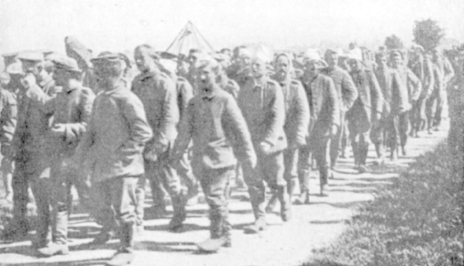

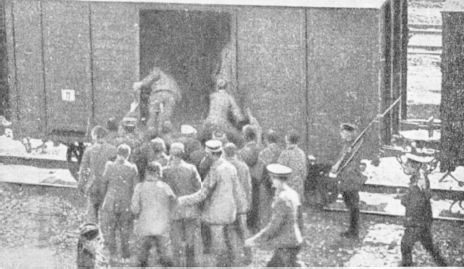
Three grabs showing shots 62.1–3. (DH158)
Malins suggests that he got to the La Boisselle area sometime on 2 July but we believe that all the surviving footage dates from 3 July. He describes stopping the car at the top of Bécourt Wood. Malins took one camera, probably the Moy and Bastie, and gave the Aeroscope to one helper and the tripod to the other. Although he does not mention him, Malins was accompanied by Ernest Brooks, who took a number of stills. Malins set off immediately to begin filming but got badly lost, having no map of the area. Under heavy shelling he was desperate to get some footage but was seen and fired on by the Germans. Eventually he found some German prisoners to film and although there is no surviving footage there are some stills showing prisoners from La Boisselle taken by Ernest Brooks. All are dated 3 July 1916. Malins describes looking for one of his assistants as it came on to rain heavily. The weather broke on the evening of 3 July, which also strengthens the case for dating the footage to that day.
Date: 3 July 1916? Place: Usna Hill to the east of the Albert to Bapaume road. Description: barrage in progress on the horizon followed by scenes of wounded returning from the front line. Shots: 38.1–4, 34.4. Stills: DH86, DH114, Q770, Q774. Cameraman: Malins.
The four shots in this caption were all taken within a fairly small area and probably at the same time. Shots 38.3–4 can be linked to photographs taken by Ernest Brooks. The dope sheet wrongly claims that Malins filmed this footage near Poziéres on 9 July. A grab of shot 38.1 in How I filmed the war is captioned ‘The Germans made a big counter-attack at La Boisselle and Ovillers. July 3 and 4, 1916.’ The only German counter-attack over this period was carried out by 190 IR of 185 Infantry Division, which is mentioned in both British and German sources. By 3 July the garrison of La Boisselle, 110 RIR, was desperately hanging on to the northern end of the village. An attack was launched to relieve them and eject the British from La Boisselle. 190 IR came under heavy British barrage fire which is probably what we see in these two shots. One column was forced to turn back towards Poziéres but contrary to what the caption tells us elements of two other columns made it into La Boisselle and succeeded in driving the British back slightly.5 Shots 38.1–2 were taken from the same position on the forward slope of Usna Hill.
Shots 38.2–3 show a group of stretcher-bearers carrying a casualty away from La Boisselle. The bombardment carries on in the background, suggesting that the two scenes have been shot with little time in between. Malins has moved west to the edge of the main Albert to Bapaume road.
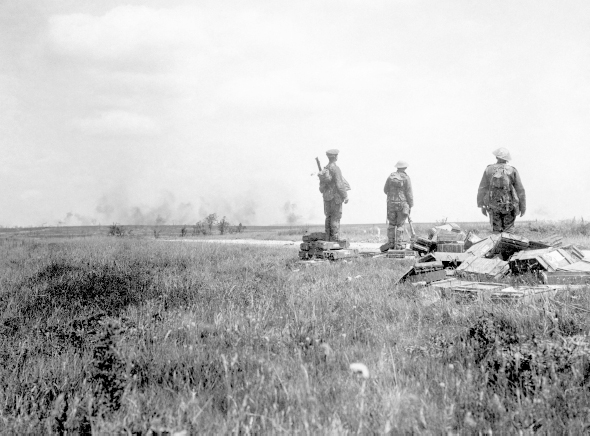
Possibly the same bombardment as seen in shot 38.1. (IWM Q774)
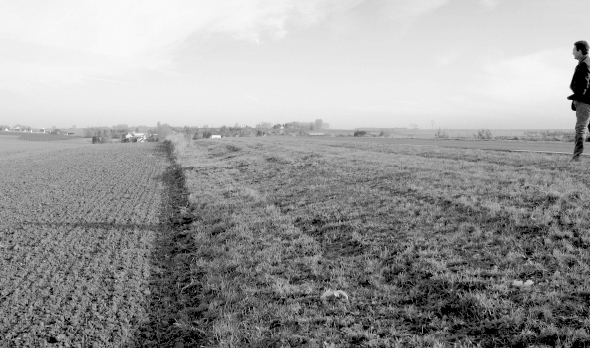
La Boisselle, which is on the left, was the objective of 190 IR. The shells were falling on the ridge line from the middle to the left of this photograph.
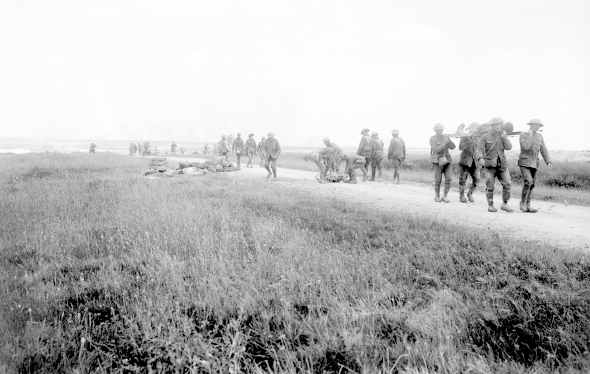
A shot dated 3 July 1916 and taken by Ernest Brooks. The figure on the left of the shot is Malins himself filming stretcher-bearers, who may be those seen in shots 37.2–3. (IWM Q770)
Shot 34.4 was probably taken at around the same time and shows two teams of stretcher-bearers, one with a wheeled stretcher carrier. This shot may have been taken on the Albert to Bapaume road near the site of Bapaume Post cemetery.
Date: 3–5 July 1916? Place: Lochnagar Crater, La Boisselle. Description: scene from western edge of mine crater. Shots: 29.5–6, 51.3–4. Stills: DH145, Q79522, IWM FLM 1659. Cameraman: Malins.
This footage appears in the video release of the film as part of caption 29 following the footage of the Hawthorn Ridge mine exploding. It has been omitted from the DVD version. The crater seen here was created by the Lochnagar mine, which was detonated under the Schwaben Redoubt or Schwaben Höhe, east of La Boisselle, at 7.28am on 1 July 1916. The mine comprised two charges of 36,000 and 24,000 pounds of ammonal in two separate chambers, and according to a German account the shower of stones continued for nearly a minute after the explosion. Although several dugouts collapsed the defenders were not put out of action to any great extent and managed to inflict heavy casualties among the attacking troops of 34 Division.6
The footage appears again, with rather more justification, as shots 51.3–4, as part of the caption entitled ‘The devastating effect of British shell fire. Smashed trenches and dugouts. A mine crater 40 feet deep.’ The dope sheet gives the date as 5 July 1916 and the location as ‘near La Boisselle and Montauban’, with Malins as the cameraman. It was probably filmed with the other shots taken in the same area on 3 July. However, even by 5 July the area was still not exactly safe for sight-seeing so it is conceivable that he filmed it some days later, perhaps between 7 and 9 July, the latter probably being his last day of filming. The camera position is on the western edge of the crater looking towards the far side of Sausage Valley, and the shots show the vast scale of this feature. A party of troops can be seen in the distance on the other side of the valley. The kilted soldier and the man wearing a trench coat, presumably an officer, appear in shots 51.1–2 and 49.1 which may indicate that all this footage was shot by Malins, despite the dope sheet attributing caption 49 to McDowell. However, the identity of these two men remains a mystery: Malins does not mention being accompanied by anyone except a couple of anonymous orderlies, one of whom may have been David Laing. It is not clear if he had a conducting officer with him.
Date: 3–5 July 1916? Place: west side of Sausage Valley, La Boisselle. Description: two anonymous figures inspecting battered German trenches. Shots: 51.1–2. Cameraman: Malins.
These two shots show the two figures seen in 51.3–4 walking through a shell crater about 15 feet deep. The second shot shows the two men wandering among some extremely badly damaged trenches. There are very few clues as to location but the valley in the distance seems to fit the west side of Sausage Valley. Trees can be seen on the horizon which may be those lining the Contalmaison to Fricourt road. The road is shown on 1916 maps as being partly tree lined although it is not known for certain if these trees would have been visible from where we suspect the photograph was taken.

A grab from the film showing the face of the crater with two figures on the rim and another coming up from the bottom. (IWM FLM 1659)

The approximate site of the camera position in 2007, with the view somewhat obscured by foliage.
Date: 3–5 July 1916? Place: Sausage Valley area, La Boisselle? Description: dead German soldiers in a shell crater. Shot: 49.1. Stills: Q65441–65442, Q79518. Cameraman: Malins.
The dope sheet states that caption 49 was shot by McDowell between 1 and 3 July between Montauban and Carnoy but we suggest that it was in fact taken by Malins at about the same time as the previous shots around Lochnagar crater. The lower halves of the Highlander and trench-coated man described above can be seen. This shot shows a shell crater full of German corpses.

Some of these bodies have been grabbed by their hands and feet and flung into the crater. German bodies excavated by No-Man's-Land in a trench at the Hohenzollern Redoubt were found in a similar attitude, having been thrown in with an equal lack of ceremony. (IWM Q65442)
Having found his missing assistant, it is probable that Malins made his way south-west towards the Carnoy area, probably on 5 July. The alternative is that he checked with GHQ, as he says in his book, and then returned home and that the footage shot in Carnoy and Montauban was actually taken by McDowell. This seems to us to be the less likely course of events and there is little or no footage attributable to McDowell after 3 July. We do not know exactly when McDowell went back to Britain but it may have been earlier than the accepted date of 10 July. Certainly Malins was back by the Albert to Bapaume road on 8 July to film 13 Royal Fusiliers. There are a considerable number of sequences in the later part of the film for which there is little evidence to attribute credit to either cameraman, and this does make a reliable chronology difficult to achieve; some of our deductions are therefore somewhat tentative!
Date: 5 July 1916? Place: Carnoy? Description: two Lanz trench mortars being carried in. Shots: 55.1–3. Still: DH149. Cameraman: Malins.
The dope sheet gives the location as Carnoy and the terrain resembles the bottom end of the village. There is no real reason to doubt the dope sheet. The Lanz mortar was an effective weapon despite its rather antiquated appearance. It fired a 4kg shell, a box of which is being examined in the background of the shot.
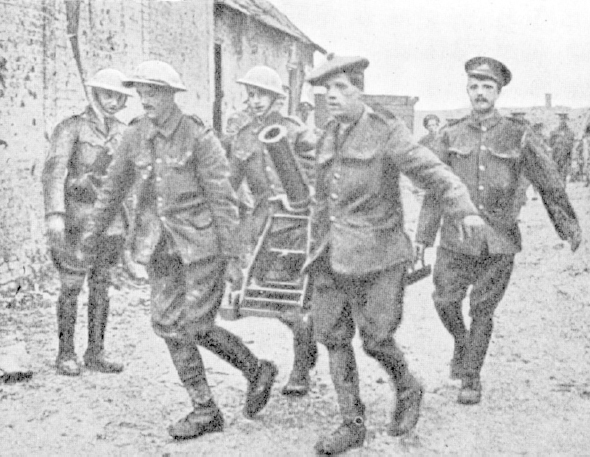
Two Lanz-type light trench mortars being carried down a road by gunners. (DH149)
Date: 5 July 1916? Place: Carnoy? Description: two 77mm field guns and a trench gun being towed past the camera. Shots: 55.4–5. Still: DH150. Cameraman: Geoffrey Malins.
The main difficulty presented by this footage is the location, although we can at least be sure it is not ‘near La Boisselle’ as the caption states. It is possible that it is the main road from Montauban to Carnoy and the guns have been taken up the Mametz to Montauban road before turning right down to Carnoy. This would fit the location in the dope sheet but there is no evidence that this road was tree-lined, one would expect to see more damage in an area that had been heavily fought over, and the landscape does not fit.
The two 77mm field guns probably belonged to 3/57 Field Artillery Regiment of 12 Division. On 1 July the only remaining serviceable gun was pulled from its shelter and was fired on the advancing British at a range of 200 metres before the gunners abandoned the position. They returned in the evening but found the British in possession of the battery. The war diary of 2 Queen's records that two 77mm guns were found on 3 July, one of which they were unable to move because of a damaged wheel. One gun in shot 55.4 has a locked wheel. 7 Division allocated three teams for the recovery of captured artillery.7
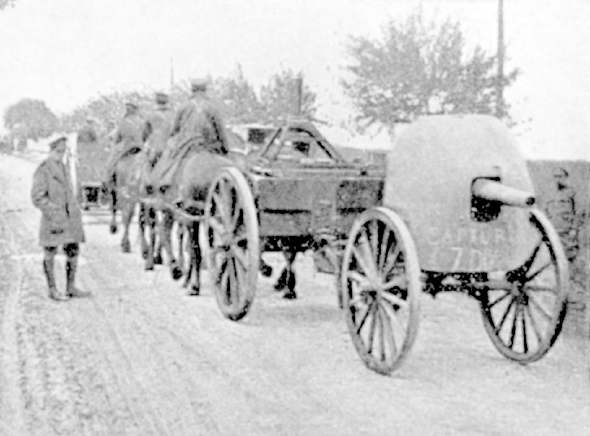
One of the guns captured by 7 Division. The officer by the roadside wearing a British warm may be Ernest Brooks, who appears in Q1456 in a similar stance. (DH150)
Date: 5 July 1916? Place: Carnoy? Description: Essex Regiment washing at a pool. Shot: 58.1. Stills: DH153, DH251. Cameraman: Geoffrey Malins?
The viewing notes not unreasonably associate this shot with 1 Essex of 29 Division, and the Seaforth Highlanders who appear in the next three shots are undoubtedly from that formation. We suggest that the first part of the caption may be correct and that these men are from 10 Essex of 18 Division. Sir Douglas Haig's great push has a photograph of this pond from the opposite direction which shows it to be in a badly ruined village. This does not match anywhere in the 29 Division area and no 29 Division patches can be seen. The pond may have been in Carnoy but it has proved impossible to find. 10 Essex Regiment was in the Pommiers area until relieved on 7 July when it moved back to Bronfay Farm. One interesting point is that a number of men say ‘Hello Mum’ or ‘Hello Mum, it's me’ when looking at the camera, demonstrating that they expected to be recognised when the film was shown.
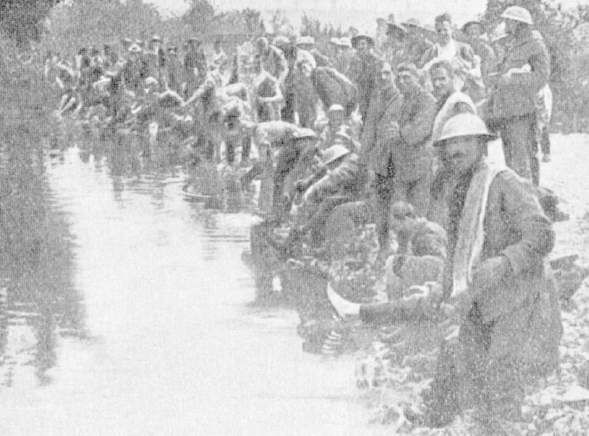
Note the trees on the horizon. There are several ruined houses off camera to the right. (DH153)
Date: 5 July 1916? Place: Mametz. Description: various views of the village. Shots: 52.2, 53.1–3. Stills: DH144, DH146, DH147, Q772–773, Q1063. Cameraman: Malins.
The footage of Mametz is particularly difficult to match to the ground. Shot 52.2 is a circular pan around the village, despite the caption claiming it is Fricourt.

The building in the centre of the photograph appears at the beginning of shot 52.2. (IWM Q773)

The approximate position in 2007 with the same S-bend in the road.
Shot 53.1 shows the top end of Mametz from a distance before 53.2 switches to another pan taken further towards the western end of the village. The remains of the church can be seen in the distance. Shot 53.3 is a tighter pan of some shattered houses.
Date: 5 July 1916? Place: not located. Description: shell-damaged German trench. Shot: 52.3. Still: DH142. Cameraman: Malins.
This is one of a number of shots that have proved impossible to locate. It shows a German trench with wickerwork revetment. One of the sign-boards appears to read ‘Jurgen …’ or ‘Jungen …’ but we cannot trace a trench with any similar name from German sources. It is possible that this shot was filmed with 53.4–5 at Fricourt but there is no firm evidence.

A still of the ruined buildings that appear in shot 52.3. (IWM Q772)
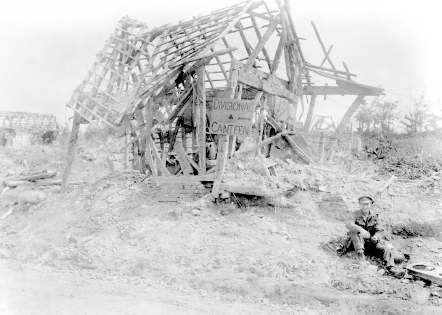
Another damaged house in Mametz in July 1916. (IWM Q1063)
Date: 5 July 1916? Place: Fricourt. Description: two shots of the village taken facing south from the top of the bank by the crossroads at the south entrance to the village. Shots 53.4–5. Stills: DH148, DH166. Cameraman: Malins.

There is nothing to link these two shots other than that they were filmed from the top of a bank and show rising ground in the distance. Malins has climbed up the bank above the road leading out of the west side of the village just below the square. The wrecked emplacement seen in the second shot would be well sited to oppose any advance made across the valley to the south. (DH166)
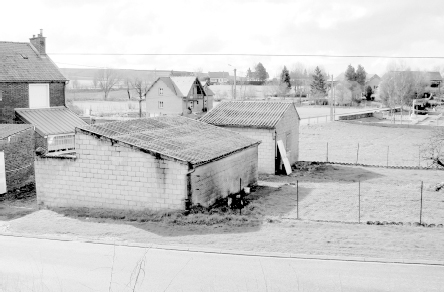
The view from the top of the bank in Fricourt back towards the British lines.
Date: 5–6 July 1916? Place: the ridge between Montauban and Carnoy. Description: two officers with soldiers clearing an enemy trench for the camera. Shots: 46.1–2. Stills: DH137, Q79516, IWM FLM 1656. Cameraman: Malins.
We accept the dope sheet attribution to Malins and the approximate location. The date of 1–3 July is probably too early. The trees in the background match those that stood beside the Albert to Bapaume road in 1916, indicating that the location is in the German lines on the ridge north-west of Carnoy. The first shot shows two officers and four men negotiating very badly shattered barbed wire. The second shows the same officers and eight men walking down a trench. The casual attitude of the men in the background confirms that the two scenes were set up for the camera but these troops were certainly front-line infantry. The helmets resemble those seen in shots 6.1–3 in Bray on 30 June with a symbol on the front and the unusual form of draw cord on the helmet cover. This suggests that the troops are from 18 Division, while the collar dog on the second officer in shot 46.2 seems to be that of the Bedfordshire Regiment. Two companies of 7 Bedfords were in the German trenches on 3 July while the remainder were in Carnoy and Caftet Wood. On 6 July the entire battalion moved forward to Pommiers and Caterpillar Trench, which would provide another date for the filming. Although it is not completely conclusive, the time and place do fit.8

A grab from shot 46.2 showing the advance down the trench.

The approximate position of this episode in 2008 with Maricourt in the distance on the left.
Date: 6 July 1916. Place: Bécordel. Description: 8-inch howitzer being towed into the village and moved into position. Shots: 60.1–5. Stills: DH160–161, Q794, Q795, Q827. Cameraman: Malins.
The dope sheet states that this footage was shot by Malins on 5 July 1916 at Bécordel and that the guns shown belong to 56 Siege Battery. The war diary of 56 Siege Battery, however, indicates that nos 1 and 2 guns arrived at Bécordel at 2.30pm on 6 July from their previous positions at Courcelle-au-Bois. It is these pieces we see in the footage as the other two howitzers did not reach there until 10.30pm that evening.9

The same scene in 2007. The curve in the road on the horizon corresponds to the road layout in the film.
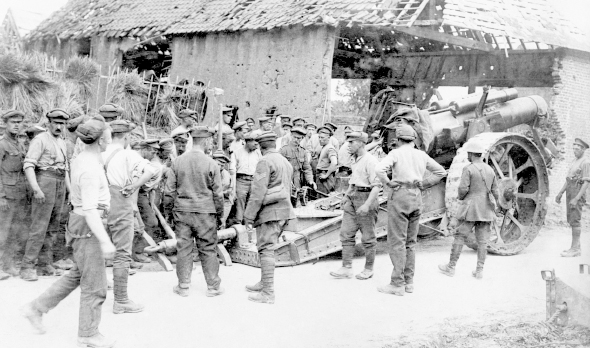
The first two guns arrived at 2.30pm but it took four hours to get them into the emplacements constructed for them earlier in the day, perhaps not surprisingly considering the difficulty of hauling a 13-ton weight with drag ropes. When both were in position a total of twenty-three rounds were fired on Mash Valley for registration. (IWM Q794–795)
Date: 8 July 1916. Place: west of the Albert to Bapaume Road. Description: men of 13 Royal Fusiliers resting after an attack on the north end of La Boisselle. Shots: 56.3, 57.1–5. Stills: DH151–153, Q775–777, Q781, Q797–798, IWM FLM 1648. Cameraman: Malins.
Shots 57.1–2 show men of an unidentified battalion bivouacked in a valley just south of Ville-sur-Ancre. It is possible but not certain that shot 56.3 of men sleeping in the open with piled arms may be associated. However, shots 57.3–5 are known to be 13 Royal Fusiliers beside the Albert to Bapaume road. The battalion had taken part in an attack on La Boisselle and spent the next two days in the Tara-Usna line near the main road. Judging by the condition of the men, Malins almost certainly filmed them on the morning of 8 July. Corroboration of this comes from Guy Chapman's Passionate prodigality. Chapman had been left behind when the battalion went up the line but rejoined them on that morning. He was talking to one of his friends ‘when there was a sudden stir. A few men rose, others woke and joined them, collecting in a mob around a khaki figure with a camera.’10

A still taken at the same time as the ciné footage which confirms Chapman's description: ‘Pickelhaubes, German helmets, Teutonic forage caps, leaf-shaped bayonets, automatics, were produced from haversacks. The faces which ten minutes earlier had seemed those of dying men were now alight with excited amusement. “Come on, come an' have your picture took” echoed from man to man: and amid much cheering, the official press was obliged with a sitting.’ The souvenirs include a helmet cover of 190 IR, which had survived the barrage shown in caption 37. (IWM Q777)

The same spot in 2007. The new buildings make an exact comparison difficult.
Date: 8 July 1916. Place: Fricourt. Description: road repairs being made by 12 Duke of Cornwall's Light Infantry. Shot: 52.1. Still: DH148. Cameraman: Malins.
The damage to Fricourt makes a certain comparison almost impossible but we believe this shot was taken in what remained of the main square looking north. The caption notes the presence of a labour battalion of the Duke of Cornwall's Light Infantry, which offers an important clue; the dope sheet dates the shot to 5 July but the war diary of 12 (Labour) Battalion DCLI records that the battalion was then working on the roads around Grovetown. At 7.30am on the morning of 8 July the commanding officer received a telegram ordering him to send two officers and 150 men to Fricourt. Problems with transport meant that only two lorries with about forty men reached the village at about 1pm. The remainder did not arrive until 5pm.11
The remains of the church can be seen on the right in this grab from Sir Douglas Haig's great push. The men working on the road may be the first party of 12 DCLI to arrive. (DH148)

The view from the south end of the square in Fricourt. Shots 53.4–5 were taken from the bank on the left and 52.1 was probably shot from the top end of the square looking north.